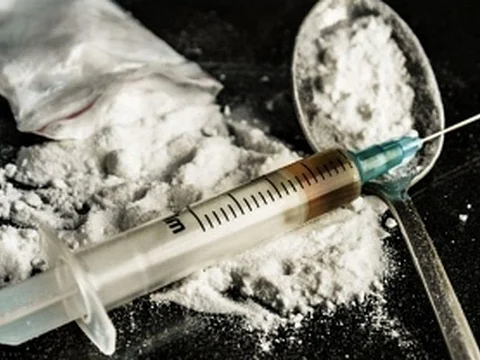
- Home
- Live Blog
- Breaking News
- Top Headlines
- Cities
- NE News
- Sentinel Media
- Sports
- Education
- Jobs

New Delhi: The challenges when it comes to tackling narcotics trade in India have increased with newer routes and fresh players entering the scene. Gone are the days when drug syndicates would use the tradition routes through Afghanistan and Pakistan to smuggle drugs into India.
While the focus of the enforcement agencies remained up North, the dynamics have changed dramatically today with South India becoming one of the biggest transit points for drug smugglers.
Today, if one looks at the operations by the drug lords, Kerala and Tamil Nadu are the biggest hubs as well as transit points in the country. Long coastlines and the proximity to international borders have made both these states as favourite destination in recent times.
Kerala's 590-km coastline is suited for smugglers. Further the state has some of the busiest airports and ports, which also works in favour of the narcotic smugglers.
For those smuggling drugs from Sri Lanka, Tamil Nadu is the ideal entry point. The investigations by the National Investigation Agency show that there are international cartels at play and they have been using Tamil Nadu as an entry as well as transit point.
The magnitude of the problem came to light when a former DMK functionary was arrested after it had been found that he was the mastermind of a Rs 2,000 crore international drug racket. Further investigations found that he was also the head of the India-Australia-New Zealand drug trafficking network.
Kerala has also become the primary drug hub for cartels from both the Golden Triangle and the Golden Crescent. The Golden Crescent has cartels operating from Afghanistan and Pakistan and the primary narcotic to be smuggled by them is opium. On the other hand, the Golden Triangle which has smugglers from Laos, Thailand and Myanmar deal in methamphetamine and marijuana.
Once the drugs land in Kerala mostly through the waters, it is then transported to Tamil Nadu, Andhra Pradesh, West Bengal, Assam, Meghalaya and Manipur.
The smugglers in Kerala have a route through most of its neighbouring states. They use the border with Andhra Pradesh to smuggle cannabis and synthetic drugs. The Karnataka border is used to push cocaine and heroin.
What started off on a smaller note has turned into a major international racket in Kerala and Tamil Nadu. There are allegations of corruption and laxity, which has helped this trade thrive.
Another reason why narcotics trade became big in the state is owing to the large number of tourists, especially from international destinations. The international cartels too have invested heavily in the state after understanding its potential.
The international cartels brought in sophistication with them and the kind of tactics that they have used has made it harder for the agencies to keep track. The network of these international cartels involves a large number of Nigerians. They are the ones who stay in touch with the local peddlers and ensure that it is delivered to them.
In recent times, there has been a spike in the quantity of drugs that have been coming in from Iran, Dubai and the Middle East. Kerala has a large population that works in the Middle East and the agencies believe that some of them may be used as mules.
Customs officials have noticed that a similar modus operandi has been followed in most cases. The drugs are packed in an air-tight plastic bag. They are then concealed inside tetra packs of fruit juices. In some cases chocolate boxes have been used and this is to ensure that the smell does not get out and it does not catch the attention of the law enforcement agencies.
The smugglers who bring in marijuana bring it in smaller quantities. This is to exploit a loophole in the Narcotic Drugs and Psychotropic Substances Act (NDPS). The commercial quantity of marijuana as notified by the act is 20 kg. Smugglers intentionally bring in a smaller quantity because if they are arrested they get bail in no time and punishment too is less severe.
In November last year, the Indian Coast Guard seized a fishing trawler that was carrying 6,000 kilograms of methamphetamine in the Andaman and Nicobar Islands. The value of the drugs was Rs 36,000 crore, thus making it one of the biggest busts.
Initial investigations suggested that the fishing trawler with six Myanmarese crew members had drifted off into the Indian coast. The trawler was meant to be on its way to Thailand, investigations had found. The investigators also did not rule out the possibility that some of the contraband found on the trawler may have been reserved for the drug smugglers in Kerala.
It may be recalled that a few years back packets of Chinese tea was washed ashore at different locations in the Islands. The locals were unsuspecting of what the packets contained.
Some of them became addicted after consuming the drugs, while others made a business out of it. The drug smugglers from Kerala who got wind of it purchased it from the islanders at a throw away price and then sold it at a profit.
Investigations learnt that on September 21, 2019, the Coast Guard had seized 1.16 kg of narcotics from a ship that had sailed from Myanmar.
The smugglers who realised that they were about to get busted had thrown 4,000 kilograms into the sea, which eventually floated into the islands. (IANS)
Also Read: Police arrest thieves and seize stolen goods and narcotics
Also Watch: